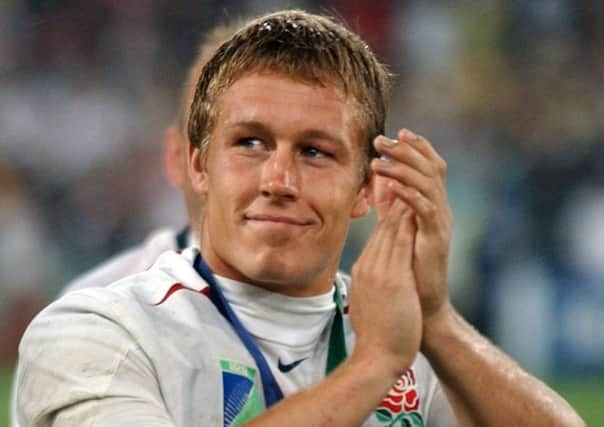Allan Massie: Why the reluctance to go for drop goals?


Undoubtedly, the fact that in professional rugby most tries are now worth seven points has contributed to the reluctance to have recourse to the drop. A team has struggled to establish a position in their opponents’ 22. It may look almost like chickening out if the stand-off decides to be content with three points rather than going for seven. Yet, more often than not, the odds are in favour of the drop-goal and against the try.
It’s often only when a match is in the balance and time running out that the drop-goal will be attempted, Duncan Weir’s finest moment in a Scotland jersey coming when he dropped an injury-time goal to give us victory in Rome. The most famous of such glory moments is, of course, Jonny Wilkinson’s drop goal which gave England the World Cup in Australia – Wilkinson was naturally left-footed, but that goal was kicked with his supposedly weaker right foot. Equally impressive was the preparation, the ball being carried forward a couple of times till the stand-off was in the right position. So, while the goal was the reward for his hours, days, weeks and months of practice, it was also a team effort. Even so, England still had to field the restart and avoid giving away a penalty, something Scotland failed to do when Gregor Townsend’s drop goal seemed to have secured victory against England at Murrayfield in 1996. Admittedly the penalty which enabled England to snatch the win went the wrong way, the referee misidentifying the hand in the ruck, but there would have been no penalty for Jon Callard to kick if we hadn’t made a mess of the restart.
Advertisement
Hide AdAdvertisement
Hide AdIt’s not only last-minute drop goals that win matches. South Africa beat England in the quarter-final of the 1999 World Cup because their stand-off, Jannie de Beer, dropped no fewer than five goals, something far more demoralising to the opposition than kicking five penalties. You can imagine the England forwards groaning “Oh hell, here comes another” every time De Beer had the ball in his hands. Multiple drop goals are rare, though John Rutherford kicked three when we drew 25-25 with the All Blacks in 1983. The French stand-off of the sixties, Pierre Albaladejo, became known as “Monsieur Le Drop” when he dropped three in a Five Nations match.
The French have been, and happily remain, as last weekend reminded us, enthusiasts for the drop-goal. Not only their stand-offs, but scrum-halves also, which is not surprising because, in French rugby, it is usually the scrum-half who bosses the game. Recently, Morgan Parra and Dimitri Yachvili been masters of “le drop”. I’ve a vivid mental image of a beauty Parra dropped against Ireland a few seasons ago. As for Yachvili, one of the oddest of the several odd decisions that the coach Thomas Lievremont made in the 2011 World Cup was to replace him in the last minutes of the final. It was unlikely France would score another try. It was clear that the referee wasn’t going to give them a kickable penalty. Almost at once, France had the ball from a ruck in the 22, ten or more yards in from the right touchline, perfect position for Yach’s left foot to win glory.
But he was no longer there, the All Blacks won the Cup and Jonny Wilkinson’s feat wasn’t matched.
It’s not only fly-halves and scrum-halves of course. One of the most famous drop goals in French rugby history was kicked by a flanker, the great Jean Prat, on the day France gained their first win at Twickenham in 1951. The story, probably too good to be true, is that another French forward, weary of Prat’s constant flow of advice, criticism and instructions, hurled him the ball, saying “see what you can do with it then”, whereupon Monsieur Prat coolly kicked what was described as “a magisterial dropped goal from a difficult angle”.
“Vive Le Drop”. For my part I would arrange for Finn Russell, whose drop-kicking is somewhat wayward, to spend a couple of days or weeks taking lessons from Mr Wilkinson. Any expense incurred by the SRU might prove to be money well spent, come the next World Cup perhaps.